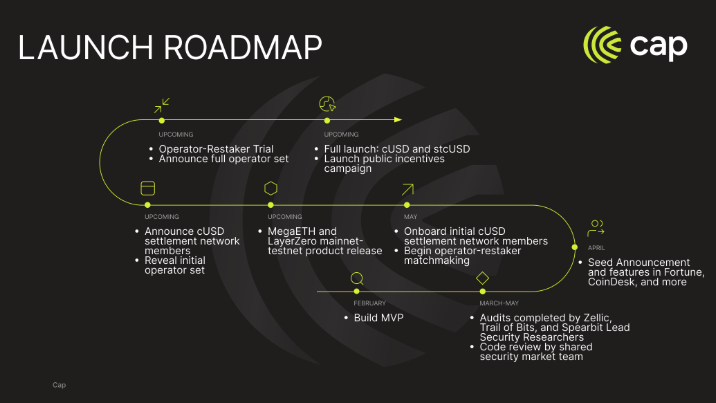Introduction
Jupiter Exchange has emerged as a cornerstone of the Solana blockchain’s decentralized finance (DeFi) ecosystem. Launched in October 2021 by an anonymous developer known as “Meow,” it began as a decentralized exchange (DEX) aggregator designed to provide users with optimal token swap routes across various Solana-based liquidity sources. By aggregating liquidity from platforms like Raydium, Orca, and Serum, Jupiter ensures minimal slippage and the best possible prices for trades. As of August 2025, Jupiter commands over 85% of the DEX aggregator market share by volume on Solana, processing billions in daily trades and generating significant revenue.
What sets Jupiter apart is its evolution from a simple aggregator into a comprehensive “super app” for DeFi. It now encompasses perpetual contracts trading, liquid staking, dollar-cost averaging (DCA), memecoin trading tools, token launchpads, and even lending protocols. This expansion positions Jupiter not just as a trading tool but as a foundational infrastructure layer for Solana and beyond, with ambitions to go omnichain through initiatives like JupNet.
History and Evolution
Jupiter’s journey reflects the rapid growth of Solana itself. Starting in 2021, it quickly gained traction for its user-friendly interface and efficiency during a time when Solana was recovering from network challenges. In 2022, upgrades included better slippage management and the introduction of limit orders—a first for Solana DEXs. The post-FTX era in 2023 saw Jupiter rewarding loyal users with a massive airdrop, boosting community engagement.
By 2024, Jupiter diversified with Jupiter Perps for perpetual contracts, JupSOL for liquid staking, DCA functionality, and Ape Pro for memecoin trading. A landmark $575 million airdrop of its native JUP token further solidified its position. Entering 2025, Jupiter launched Jupiter Studio for easy token creation, executed a second $616 million JUP airdrop, and acquired projects like Moonshot, SonarWatch, UltimateWallet, and DRiP to enhance its ecosystem. Recent milestones include the private beta of Jupiter Lend and the testnet for JupNet, an omnichain Layer 1 blockchain aimed at aggregating liquidity across chains.
This evolution underscores Jupiter’s adaptability, turning it from a niche aggregator into a multifaceted protocol that drives much of Solana’s DeFi activity.
Key Features and Products
Jupiter’s product suite is diverse and integrated, making it a one-stop shop for Solana users:
- DEX Aggregator: The core feature scans multiple Solana DEXs to route trades efficiently, handling over $1 billion in daily volume and generating $66 million in annualized revenue as of early 2025.
- JupSOL: A liquid staking token offering an 8.1% annual yield through MEV redistribution, with a 0.1% deposit fee. It holds 10.5% of Solana’s liquid staking token (LST) market share, ranking fourth overall.
- Jupiter Perps: Launched in 2023, this platform has processed over $340 billion in volume, capturing 5.2% of the perpetuals market on Solana.
- Jupiter DCA: Allows users to invest gradually, averaging $120 million in weekly volume and contributing $10 million in annualized revenue.
- Ape Pro: A terminal for memecoin trading, though it faces stiff competition and has had limited revenue impact.
- Jupiter Studio: Enables token creation, generating $7 million in annualized revenue but representing only 1% of new tokens on Solana.
- Jupiter Lend: In private beta as of August 18, 2025, this lending platform offers high loan-to-value (LTV) ratios of 90-95% and is built for composability within Solana’s infrastructure.
- Jupiter Send: A new feature for seamless transactions, processing over 100,000 transactions shortly after launch.
- JupNet: An omnichain network in testnet, featuring innovations like Jupiter SVM and aggregated decentralized identity, with a mainnet launch expected by year-end.
These features emphasize Jupiter’s focus on user experience, low fees, and integration, making it essential for Solana traders.
The JUP Token: Utility and Performance
The JUP token, launched in 2024, serves as a governance and utility token within the ecosystem. It enables voting on protocol decisions and benefits from revenue-sharing mechanisms. Since February 2025, 50% of Jupiter’s revenue has been allocated to JUP buybacks, with 70 million tokens (worth $38 million) repurchased to support its value.
As of August 19, 2025, JUP trades at approximately $0.49-$0.52, with a market cap of around $1.5 billion. Performance in 2025 has been mixed: It peaked at $1.14 early in the year but has fluctuated between $0.30 and $0.50 amid market volatility. Price predictions for the remainder of 2025 vary widely—bearish forecasts see it dropping to $0.37, while bullish ones project up to $2.10, with averages around $0.50-$1.20. Factors influencing performance include Solana’s overall growth, JUP airdrops, and ecosystem expansions.
Market Position and Competitors
Jupiter dominates Solana’s DEX aggregator space with over 85% market share, but it competes in fragmented segments. In direct DEX trading, rivals include Raydium (hybrid liquidity), Orca (concentrated liquidity via Whirlpools), Lifinity (oracle-driven), Saros Finance, Drift Protocol (perps-focused), Zeta Markets, and Saber. For perps, Hyperliquid holds 80% market share, though Jupiter Perps has grown to 5.2%. Launchpads like Pumpfun and Letsbonk outperform Jupiter Studio, which has only 1% of new token creations.
Despite competition, Jupiter’s aggregation model and super app approach give it an edge, especially as Solana’s DeFi TVL surges. Its market cap of $1.5 billion is seen by some as undervalued compared to Solana’s $81 billion, given Jupiter’s role in driving trading volume.
Recent Developments
In August 2025, Jupiter launched Jupiter Lend in private beta, aiming to redefine DeFi lending with full composability and integration into Solana’s financial infrastructure. Jupiter Send, a mobile-first transaction feature, has already handled over 100,000 transactions. Community discussions on platforms like X highlight its use for swaps, airdrops, and potential as a major Solana project. Additionally, JupNet’s testnet progress signals a shift toward cross-chain capabilities.
Challenges and Risks
Jupiter faces risks inherent to DeFi: Network congestion on Solana, regulatory scrutiny, and competition from emerging protocols. Its anonymous founder adds an element of uncertainty, though the team’s execution has been strong. Token concentration (top 10 wallets own 75%) and revenue declines (down 80% from peaks) pose valuation risks. Security incidents in the broader Solana ecosystem could also impact trust.
Future Outlook
Looking ahead, Jupiter’s roadmap emphasizes omnichain expansion via JupNet, deeper integrations, and more revenue-generating products. With Solana’s scalability driving DeFi adoption, Jupiter could see JUP prices surge to $1-2 if bullish trends hold. Analysts project continued dominance, potentially shaping Solana’s DeFi landscape through 2030.
Conclusion
Jupiter Exchange exemplifies innovation in DeFi, evolving from a DEX aggregator into a vital Solana infrastructure. Its robust features, community focus, and strategic expansions make it a compelling player, though investors should weigh risks. As Solana thrives, Jupiter is poised to lead the charge in decentralized trading and beyond.



